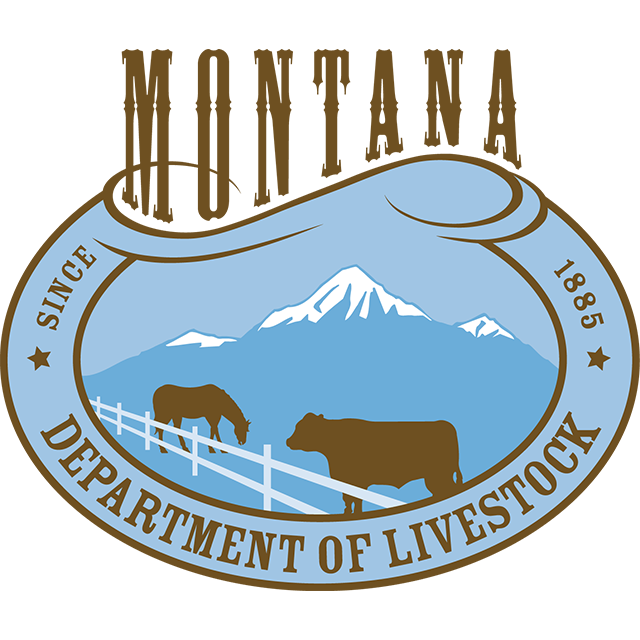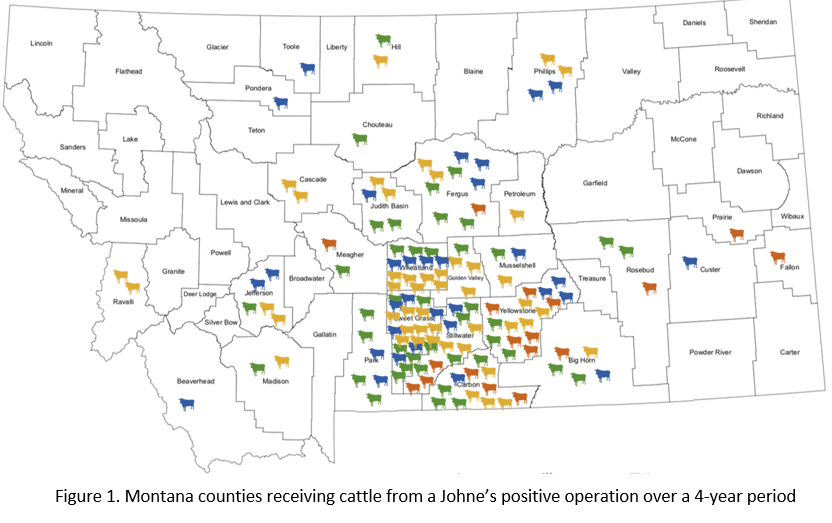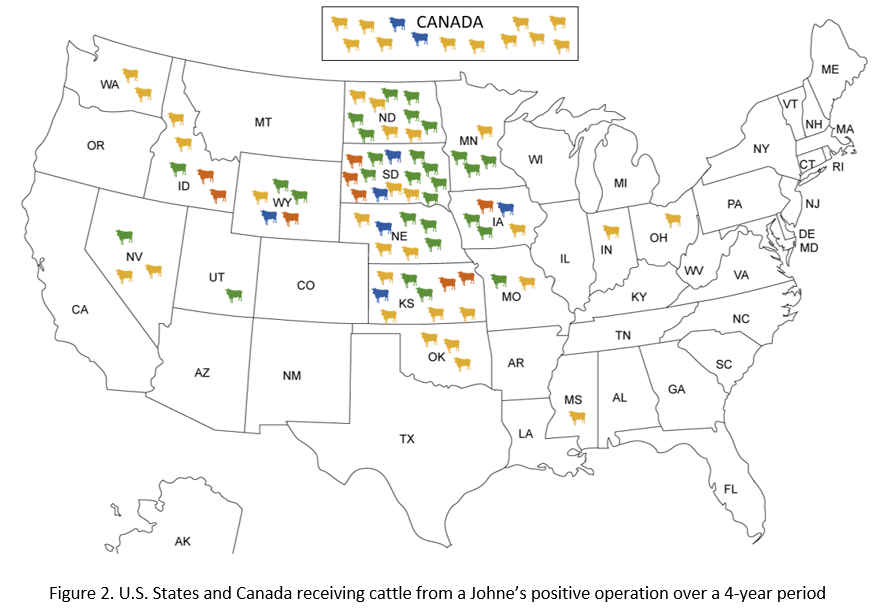
Here to serve the people of Montana and its livestock industry.
Animal Health Bureau
- Permits & Forms
- Brucellosis
- Brucella canis
- Feral Swine
- High Path Avian Influenza
- Johne's
- Rabies
- Trichomoniasis
- West Nile Virus
- National Poultry Improvement Program (NPIP)
- Pay for Permits Online
Helpful Links
Contact Information
Department of Livestock
Animal Health Bureau
PO Box 202001
Helena, MT 59620-2001
Email Us
Johne's Disease
Basic Disease Information
Additional Disease Information
Managing Johne's Disease
Johne's Herd Management Plan Outline
Johne's Herd Management Plan Classification Levels
Montana Johne's Control Program Rules and Standards
Johne’s Disease in Montana
In response to feedback from the veterinary community and members of the cattle industry, the Department of Livestock (DOL) is increasing education and outreach efforts about Johne’s Disease.
Johne’s is a contagious and usually fatal bacterial disease that primarily affects the small intestine of cattle and other ruminants. The Johne’s bacterium (Mycobacterium avium subspecies paratuberculosis (MAP)) is primarily spread between animals through feces. Clinical signs of the disease include diarrhea and weight loss, despite a normal appetite and are rarely seen until two or more years after initial infection, which usually occurs within 6 months of birth. As an animal ages, susceptibility to MAP decreases and a larger dose of the bacteria is required for infection.
To better understand the prevalence of Johne’s disease in Montana, we reviewed recent Johne’s testing data from 2017-2019. Our findings highlight a lack of knowledge about the occurrence of Johne's in Montana. The number of cattle tested within the three-year period is low. More, positive cases are being diagnosed despite the low numbers of cattle tested. Only 0.3% of Montana’s cattle herd was tested between 2017-2019, yet 146 premises were identified as having Johne’s disease.
Johne's Testing Data
The map below represents Montana Johne's tests for FY25 (7/1/2024 - 6/30/2025) by county. Click the map to display the interactive map with more in-depth detail.
The chart below (Chart 1) displays Johne’s testing in the top twenty counties based on cattle inventory. Cattle inventory is shown with the cow icon and the percent of cattle tested is represented by the orange bar. Readers should note that less than 3% of cattle were tested in all counties included below. The data source for cattle inventory by county is 2019 Per Capita Data.

Chart 1. Percentage of cattle tested for Johne's based on cattle inventory
To emphasize the risk of low testing activity, below is summary of animal movement from a single Montana premises. This case shows how quickly Johne’s disease can spread through cattle sales and movement.
Data was gathered from a single operation with a history of Johne’s positive animals. All data represents primary sales from the source operation to customers, between January 2015 and May 2018. The number of customers purchasing animals from the source operation may be an underestimate and do not account for cattle buyer sales and further distributions. During this time period, the source operation sold cattle to 225 individual customers, 139 of those were in-state and 86 out-of-state. A total of 1795 cattle were sold, 888 of those in-state and 907 out-of-state.
The maps below (Figure 1 and 2) show the Montana counties, states and countries receiving cattle from the source operation over the four-year period.


The chart below (Chart 2) breaks down the number of customers who purchased cattle and the number of cattle sold, by year.

Chart 2. Number of cattle sold by one Johne's positive operation between 2015-2018
Johne's Disease is particularly concerning in the seedstock sector of the cattle industry. As mentioned above, most animals are infected while they are calves but do not present with signs of the disease until later in life. Animals such as replacement females or bulls, may be infected when purchased, despite appearing healthy.
Johne's Control Program
To help address the spread of Johne’s Disease, the DOL has developed a state Johne’s Control Program. The goals of the Program include:
- Minimize the spread of Johne’s disease through animal sales and movement.
- Identify positive animals/herds and implement management practices to eliminate the disease.
- Support non-infected herds by identifying biosecurity practices to prevent the introduction of the disease into their herds.
- Create a market opportunity for participating herds to advertise their involvement in the program.
Participating producers work with their local veterinarian to develop a herd health plan addressing biosecurity, herd testing, and management of high-risk animals. Producers then obtain a “level of certification” based on the health status of their herd, and their testing plan (whole herd testing vs. individual animal testing). Higher levels of certification suggest a herd is lower risk of being infected with the disease. MDOL encourages producers to mention their participation in the program while marketing their cattle to show their dedication to minimizing the risk of Johne’s transmission within the industry. Additionally, if you purchase cattle for breeding purposes, you should inquire about the health status of animals prior to purchase.
The ultimate goal of the Department's efforts is to see more Montana cattle tested. This will allow for the identification and removal of infected animals and reduce the spread of disease throughout the state, regional and national cattle herd. It is important for all producers to understand that a positive, managed herd is lower risk than a herd with an unknown/non-advertised status.
Johne's Herd Management Plan Classification Levels
| 0: Unmanaged Risk |
|
| 1: Evaluated Risk |
|
| 2: Managed Risk |
|
| 3: Assurance |
|
| 4: High Assurance |
|
